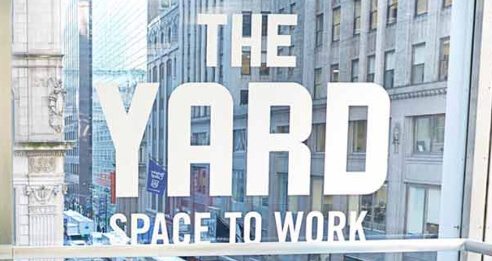
Largest Coworking Companies


The popularity of coworking spaces can in part be explained by the diversity of people who inhabit them. The fact that coworking members represent different spheres of business and offer a variety of services creates endless possibilities for networking, partnership, and collaboration. But what happens when coworking competitors, namely two or more companies offering similar or the same services, come under the same roof?
Firstly, let’s look at the situation from the members’ perspective. Having a direct competitor at a coworking space might create tension. One of the parties or both companies involved might get a feeling that someone is breathing down their neck. If both members represent tech companies, security is a big problem as they might become anxious about data leakage. Businesses offering similar services may face a risk of their clients being poached by a competitor. Any phone conversation in a public area, any client meeting in a conference room may create a potentially dangerous situation.

Another downside about coworking competitors working side by side is the fact that most likely they won’t be able to engage with the community freely. A restricted interaction may result in poorer networking and the absence of close collaboration which defeats the purpose of working at a shared space.
Let’s not forget about investors and partners who most likely will not be happy to know about competition under one roof.
As a coworking operator, what can you do in such a situation? On the one hand, your space is not an exclusivity model, and you cherish each and every of your members regardless of their business activity and area of operations. On the other hand, you probably want all of your clients to be happy about the work environment you offer.

To avoid any possible complications of the situation, your community manager should be able to create the boundaries. Depending on your coworking layout a manager should be able to offer coworking competitors private offices located in different parts of the locale. If the startups in question both work in the open space area, zoning is of crucial importance. Your community manager has to make sure that the competitors do not have to come in contact unless they choose to. You might ask, how big should coworking be? With proper zoning and different kinds of spaces, for example private offices, floating desks and cubicles, the issue of competitors working side by side can be avoided no matter how big or small your venue is.
To not be thrown off balance, you have to be proactive and prepare yourself for a situation when two or more of the same kinds of businesses choose to operate from your venue. When on-boarding a new client, you could ask them to fill in a questionnaire in which they state their primary activity and whether they think competition can hamper or facilitate their business operations. In the end, not every business looks at competition as a threat. Many companies would prefer to join forces, turn competitors into allies and apply the "Two heads are better than one" principle in real life.
Save your community manager 41 hours each week—learn how The Yard did it with cloud-based access control.
Read the Case StudyThe Guide to Make Your Space More Profitable
Including interviews with experts and consultants.
Free access to our best guides, industry insights and more.
